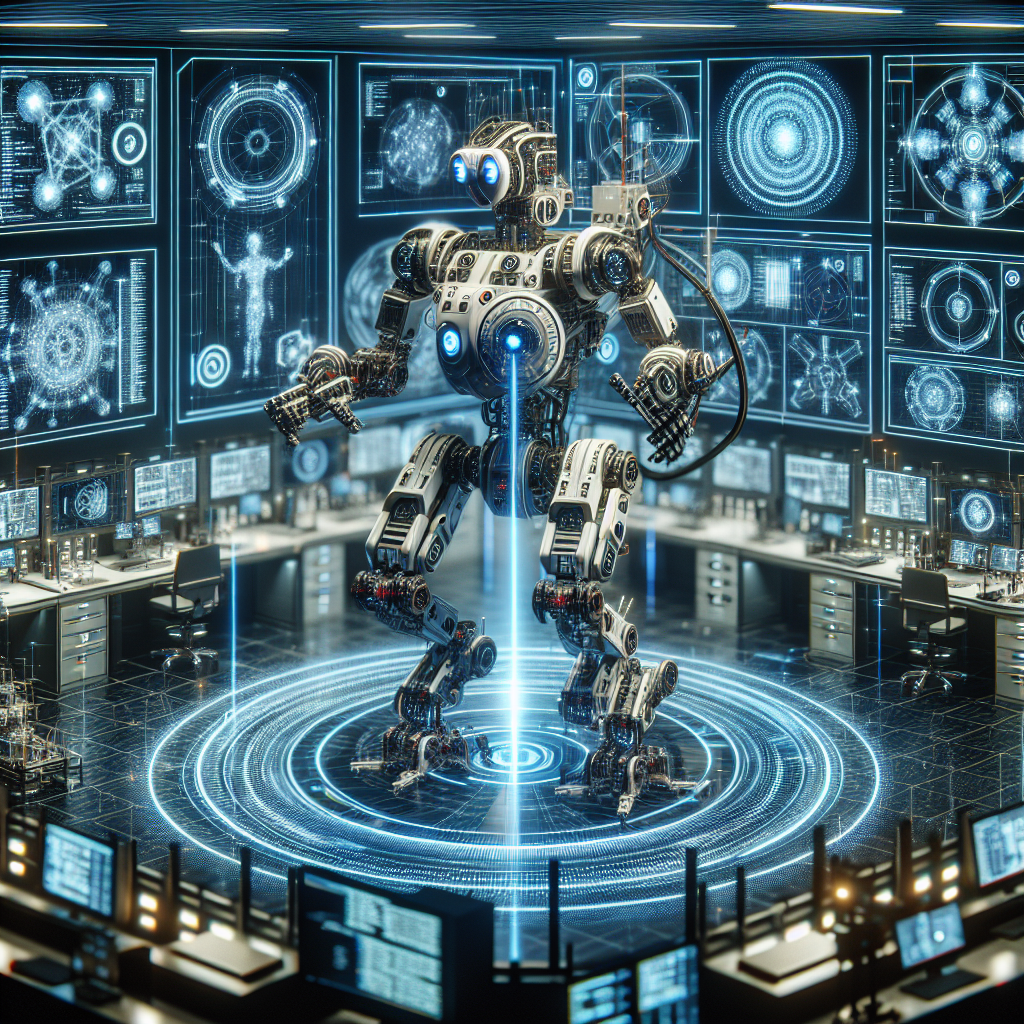
Description
Major Related too : Robotics Engineering, Computer Science, Electrical Engineering, Mechanical Engineering, Aerospace Engineering, Industrial Engineering, Cognitive Science
Description : Introduction to Robot Operating System (ROS) Robot Operating System (ROS) stands as a cornerstone in the realm of robotics software development, offering a robust and flexible framework for building complex robotic systems. Developed by Willow Garage initially in 2007 and later maintained by the Open-Source Robotics Foundation, ROS has evolved into a standard platform widely adopted by researchers, developers, and enthusiasts across the globe. At its core, ROS facilitates seamless integration and communication between various hardware components, sensors, and software modules within a robotic system. Architecture of ROS At its essence, ROS operates as a middleware framework, providing a structured yet decentralized architecture for developing robotic applications. Its architecture revolves around the concept of nodes, which are individual processes that perform specific tasks. These nodes communicate with each other through a publish-subscribe messaging system known as the ROS Master. The key components of ROS architecture include: Nodes: Nodes are the fundamental building blocks of ROS applications. Each node represents a distinct computational unit responsible for executing specific functionalities, such as sensor data processing, control algorithms, or motion planning. ROS Master: The ROS Master serves as a centralized server facilitating communication between nodes. It manages the registration of nodes, enables message passing, and provides parameter server functionalities. Messages: Messages are data structures used by nodes to exchange information. ROS employs a strongly-typed message passing system, allowing nodes to communicate seamlessly using predefined message types such as sensor data, control commands, or status updates. Topics: Topics serve as communication channels through which nodes exchange messages. Nodes can publish messages to topics or subscribe to topics to receive messages of interest. This decoupled communication paradigm fosters modularity and scalability within ROS applications. Services: Services enable synchronous communication between nodes by allowing one node to request a specific task or information from another node. Services follow a request-response model, enabling nodes to perform actions or retrieve data on-demand. Parameter Server: The Parameter Server stores configuration parameters and settings for ROS nodes. It provides a centralized repository for managing dynamic parameters such as control gains, sensor calibration values, or system configurations. Tools in ROS ROS provides a comprehensive suite of tools and utilities to streamline the development, debugging, and deployment of robotic applications. Some of the prominent tools in ROS ecosystem include: RViz: RViz serves as a powerful 3D visualization tool for ROS, enabling developers to visualize robot models, sensor data, and environment representations in real-time. It facilitates debugging, simulation, and analysis of robotic systems. RQT: RQT (ROS Qt-based Tools) is a collection of graphical user interface (GUI) plugins for ROS. It offers various tools for visualizing data, debugging nodes, plotting sensor data, and monitoring system performance. Gazebo: Gazebo is a high-fidelity robotics simulator integrated with ROS. It provides a realistic simulation environment for testing and validating robotic algorithms, control strategies, and navigation systems. ROS Navigation Stack: The ROS Navigation Stack offers a set of algorithms and libraries for autonomous navigation and path planning. It includes modules for localization, mapping, obstacle avoidance, and trajectory planning, essential for building autonomous robotic systems. ROS Packages: ROS packages encapsulate reusable software components, libraries, and algorithms tailored for specific robotic tasks. The ROS community maintains a vast repository of open-source packages covering a wide range of functionalities, from basic sensor drivers to advanced perception and manipulation algorithms. In conclusion, Robot Operating System (ROS) stands as a pivotal platform empowering developers to build sophisticated robotic systems with ease. Its modular architecture, rich set of tools, and vibrant community make ROS the framework of choice for robotics software development, fostering innovation and collaboration in the field of robotics. Whether you're a seasoned researcher, a hobbyist, or a newcomer to robotics, ROS offers an accessible yet powerful framework to bring your robotic ideas to life.
Syllabus
-
Robot Operating System (ROS)
- An introduction to ROS the Robot Operating System
- The Ultimate Guide to using Motors in Robotics (including ROS, Raspberry Pi)
- Introduction to the Robot Operating System ROS Middleware Mike Anderson - Archi_Tech # 1
- Introduction to Robotics Operating System ROS by Mohamed A
- Robot Operating System: How Open Source Software & Linux is Powering the Next Generation of Robotics
- Using an Industry-Grade and Open-Source Platform for Robotics | DOST-ASTI
- "Demystifying robotics. Insights of software development for autonomous systems" | Code Europe 2023
- Rise of Robotics: Innovating the Future with IoT & AI
- The ROSSINI Modular KIT: a complete set of tools for collaborative robotics